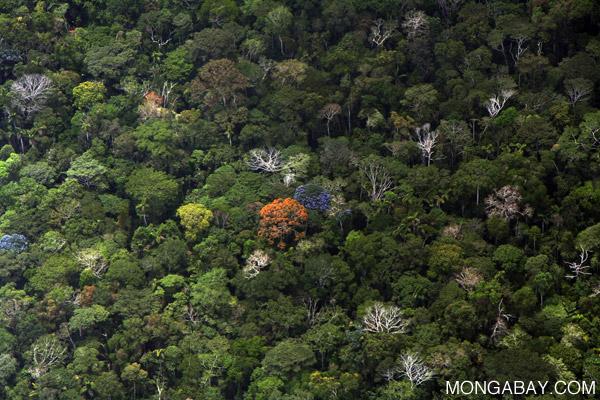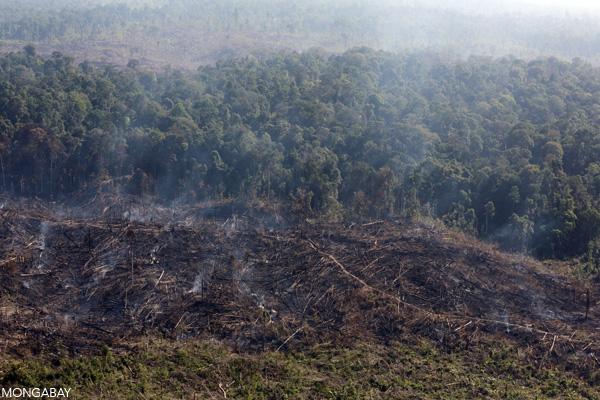Plants rely on three critical elements for growth: carbon dioxide, water, and sunlight. Rising atmospheric carbon dioxide concentrations are therefore expected to increase rates of forest growth, in turn helping counter some of humanity’s influence on global climate. But a new study provides evidence that challenges that assumption.
The research, published as a cover story in Nature Geoscience, is based on analysis of tree ring data — which provide an annual record of growth in some, but not all, tropical tree species — in forests in Bolivia, Cameroon and Thailand. The study reaches the surprising conclusion that despite a 40 percent rise of atmospheric CO2 levels since 1850, the growth rate of tropical trees has not increased.
“None of the forests investigated have provided us with evidence of increased tree growth over the last 150 years,” said Wageningen University’s Pieter Zuidema, who led the research and co-authored the paper. “That is remarkable because it has always been assumed that trees grow more rapidly when there is more CO2 in the atmosphere.”
The findings run counter to both theoretical models and observations using different proxies for tree growth, but the authors propose some possible explantations. For example, environmental stressors like increased temperatures or decreased precipitation could counter the growth effects of carbon dioxide fertilization. Alternatively, a limitation of other resources needed for growth — like nutrients or sunlight, in cases where more leaf growth cause more shading — could be a factor.
However another explanation could be that tree growth is indeed accelerating, but isn’t showing up in the tree ring data collected by the scientists. For example higher CO2 levels could be triggering trees to produce more fruit or root biomass, rather than thicker trunks and stems. Furthermore, growth could be occurring more surreptitiously among shrubs, saplings, and seedlings, spurring an overall increase in forest biomass.
For these reasons, the authors say more research is needed to capture the full potential effects of increased atmospheric CO2 levels. Still they argue that current models built on the assumption that rising CO2 levels will lead forests to absorb more carbon may need revisiting.
“Our results are important for the IPCC predictions, which underpin international climate policy,” said first author Peter van der Sleen. “Almost all models made so far assume that CO2 stimulates tree growth in the tropics. In this way, tropical forests can function as carbon sinks. They intercept, as it were, a part of the extra CO2. Our study demonstrates that this assumption is probably too optimistic.”
CITATION: Peter van der Sleen et al (2014). No growth stimulation of tropical trees by 150 years of CO2 fertilization but water-use efficiency increased. Nature Geoscience. PUBLISHED ONLINE: 15 DECEMBER 2014 | DOI: 10.1038/NGEO2313
This article was originally written and published by Rhett A Butler, the head administrator for news.mongabay.com. For the original article and more information, please click HERE.




